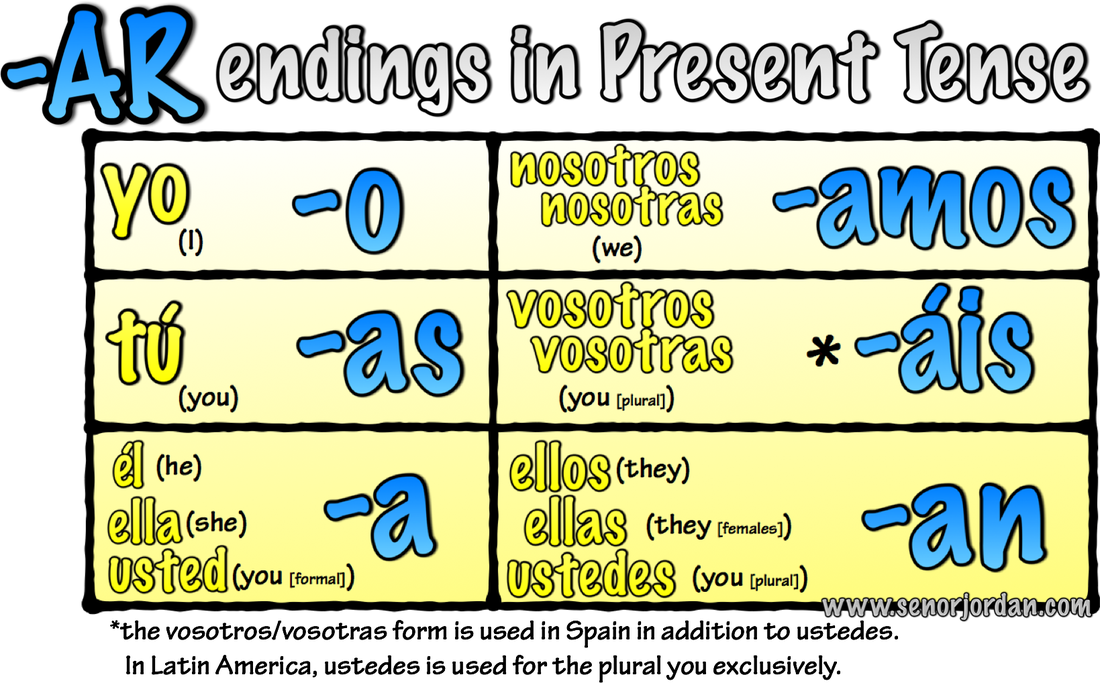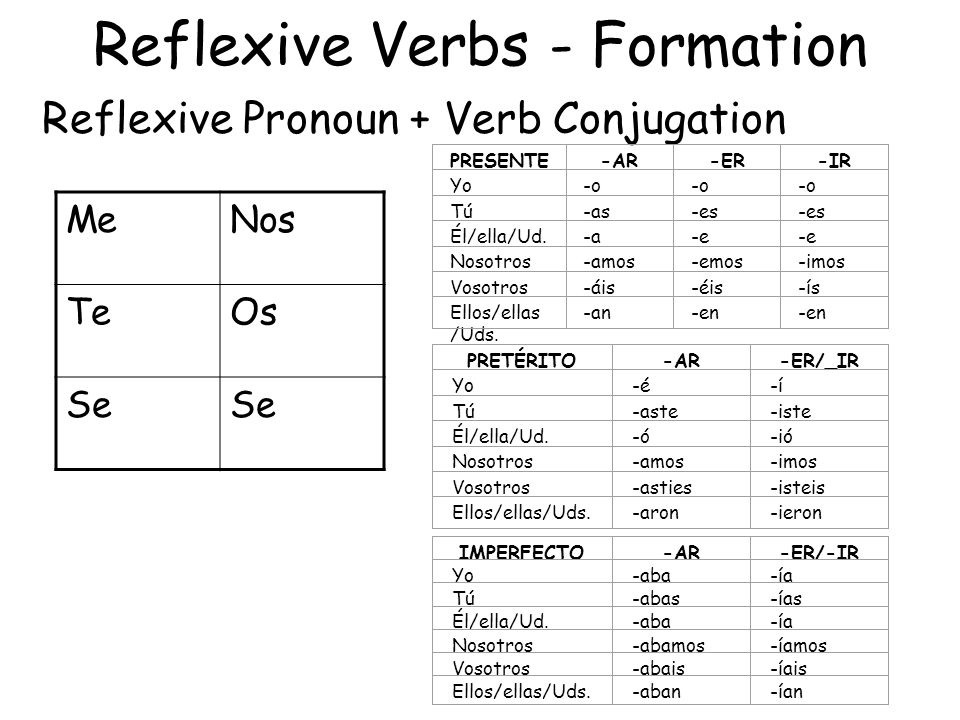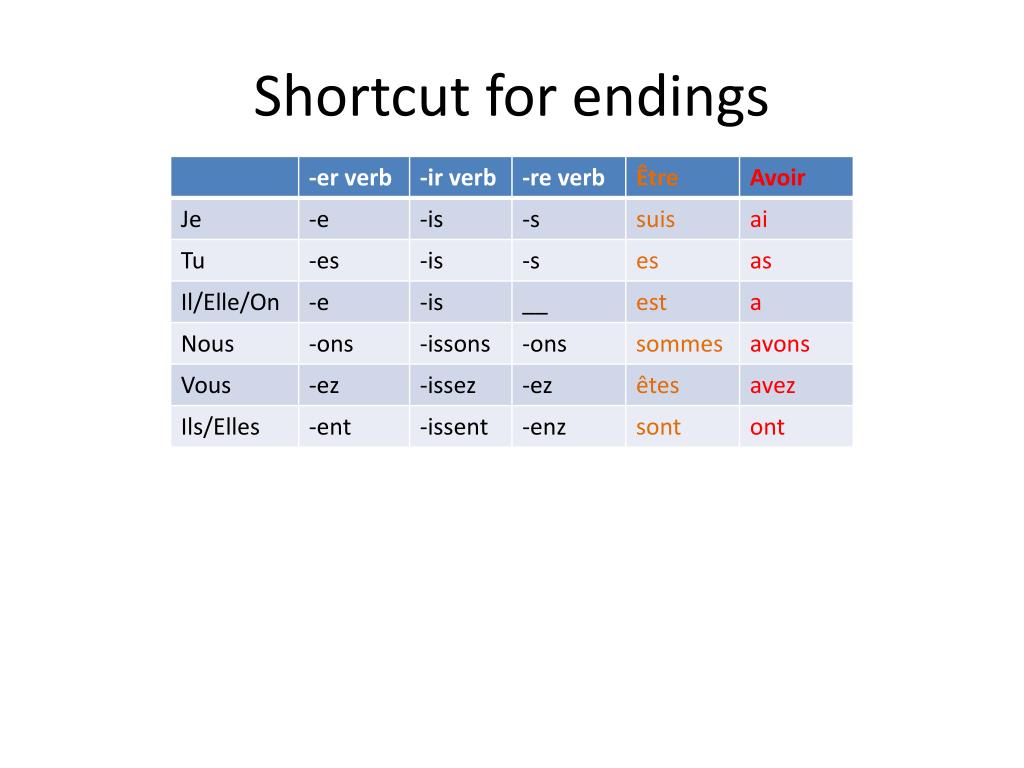
#Ir verb endings how to#
So, here is an example on how to do this: That way, it will roll off your tongue in conversations and you won’t have to go over the entire verb conjugation table every time you try speaking. For each conjugation ( yo voy, tú vas, etc), you take an actual sentence and you imprint the conjugation on your brain as part of a chunk (or word combination). This is why we recommend learning it through chunking. Also, ir is an irregular verb, so that makes it a bit more complicated! The meaning of phrases using ir (to go) isn’t always obvious by knowing what each individual word means. But first, we need to talk about something that’ll make your life MUCH easier. In a moment I’ll give you all the different use cases for the verb ir. Ellos van a manejar (They are going to drive).Vamos a la playa (We are going to the beach).Ella va al gimnasio todas las mañanas (She goes to the gym every morning).Vas a ir a la escuela (You will go to school).Veamos algunos ejemplo (Let’ see some examples): If that doesn’t tell you the importance of this verb, I don’t know what does! Just like in English, the verb ir (to go) can be used with an incredible variety of meanings. This is a very common, perfectly grammatical statement with no una, no dos, sino tres diferentes formas de conjugar el verbo “IR” (not one, not two, but three different ways to conjugate the Spanish verb “to go”).

Have you ever heard the Spanish expression “ me voy a ir yendo”?

To talk about what you normally do and where you usually go The importance of the verb "IR" (to go).When we form a question that elicits information, the position of the subject pronoun (ellos), if used, frequently follows the conjugated verb. It’s best to memorize these verbs and their corresponding prepositions in this case “asistir a” = “to attend” (school, class).ĭid you remember that when two verbs appear together and there is no change in subject the first verb is conjugated (debo) but not the second (estudiar)? #3 from above: ¿Tú asistes a la universidad?ĭid you put the “a” after the verb “asistes”? Certain verbs take a corresponding preposition after them, and sometimes they don’t translate to anything specific in English. Some vocabulary you might need: poemas=poems universidad=college más tarde=later Now you try out some sentences: use the verbs from the -er and -ir lists above to translate the sentences below. They are included in the examples below for clarity. OJO ( note): Remember, it is not necessary to use the subject pronouns (ella, Ud., etc.) if it is clear who we are speaking about from the context. Notice only the “nosotros” and “vosotros” forms differ between -er and -ir verbs: (to ask a question: Spanish doesn’t have an equivalent for the auxiliaries “do / does”) For example, “tú comes” has three equivalents in English (the subject pronoun tú isn’t required): Tú comes con ella todos los días. Notice the possibilities of present tense conjugations in Spanish.

Let’s take a look at the regular -er ending of the verb comer (to eat): Regular -er ending verbs: The idea of “taking off the verb ending” and then adding other endings to give the verb a subject (yo, tú, ella, etc.) is the same as we did for -ar ending verbs.

The conjugation pattern for -er and -ir ending verbs is nearly the same, differing only in the nosotros and vosotros forms. As mentioned previously, there are three types of verbs in Spanish: those ending in -ar, -er and -ir.


 0 kommentar(er)
0 kommentar(er)
